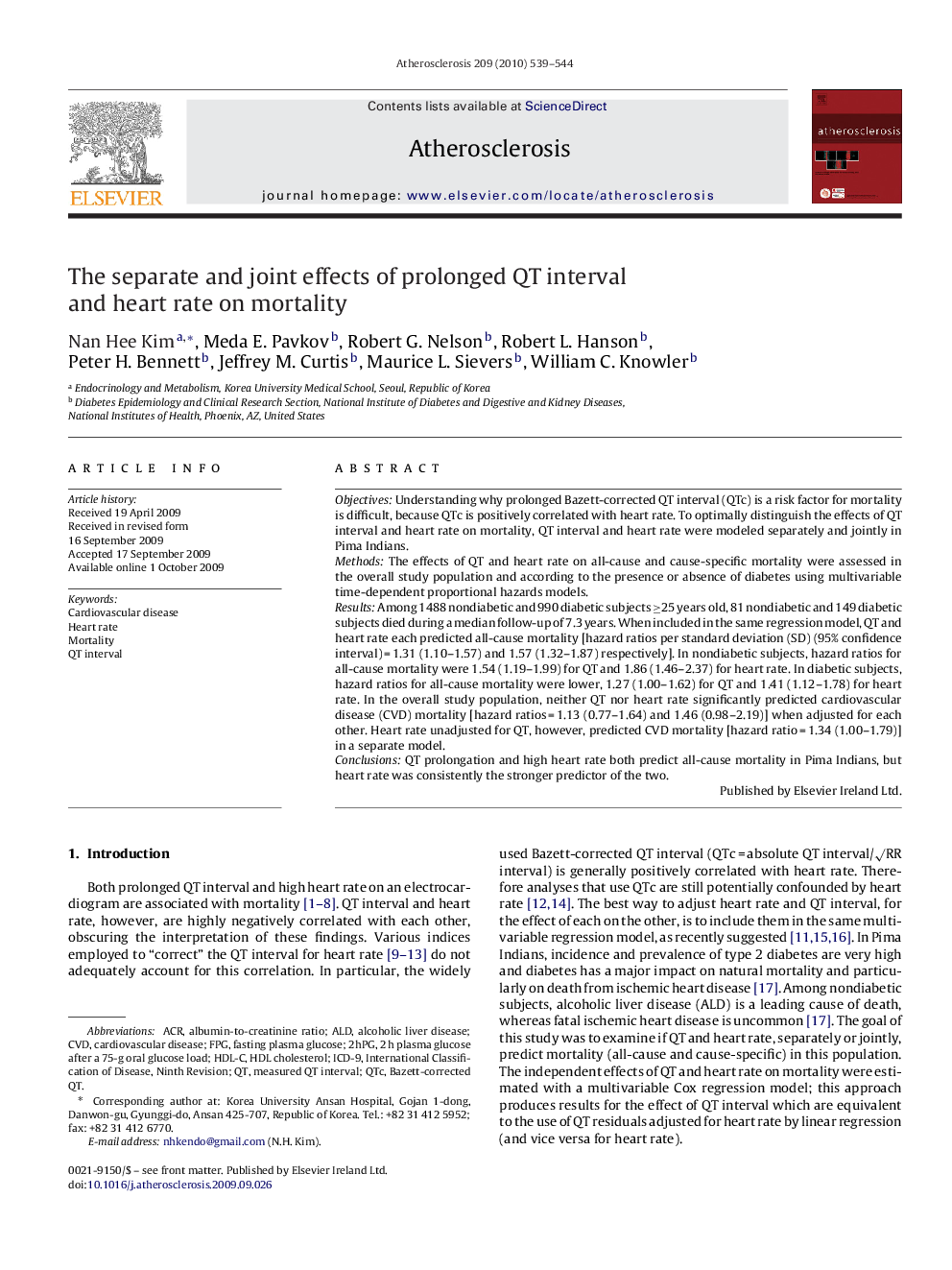| کد مقاله | کد نشریه | سال انتشار | مقاله انگلیسی | نسخه تمام متن |
|---|---|---|---|---|
| 2893245 | 1172409 | 2010 | 6 صفحه PDF | دانلود رایگان |

ObjectivesUnderstanding why prolonged Bazett-corrected QT interval (QTc) is a risk factor for mortality is difficult, because QTc is positively correlated with heart rate. To optimally distinguish the effects of QT interval and heart rate on mortality, QT interval and heart rate were modeled separately and jointly in Pima Indians.MethodsThe effects of QT and heart rate on all-cause and cause-specific mortality were assessed in the overall study population and according to the presence or absence of diabetes using multivariable time-dependent proportional hazards models.ResultsAmong 1488 nondiabetic and 990 diabetic subjects ≥25 years old, 81 nondiabetic and 149 diabetic subjects died during a median follow-up of 7.3 years. When included in the same regression model, QT and heart rate each predicted all-cause mortality [hazard ratios per standard deviation (SD) (95% confidence interval) = 1.31 (1.10–1.57) and 1.57 (1.32–1.87) respectively]. In nondiabetic subjects, hazard ratios for all-cause mortality were 1.54 (1.19–1.99) for QT and 1.86 (1.46–2.37) for heart rate. In diabetic subjects, hazard ratios for all-cause mortality were lower, 1.27 (1.00–1.62) for QT and 1.41 (1.12–1.78) for heart rate. In the overall study population, neither QT nor heart rate significantly predicted cardiovascular disease (CVD) mortality [hazard ratios = 1.13 (0.77–1.64) and 1.46 (0.98–2.19)] when adjusted for each other. Heart rate unadjusted for QT, however, predicted CVD mortality [hazard ratio = 1.34 (1.00–1.79)] in a separate model.ConclusionsQT prolongation and high heart rate both predict all-cause mortality in Pima Indians, but heart rate was consistently the stronger predictor of the two.
Journal: Atherosclerosis - Volume 209, Issue 2, April 2010, Pages 539–544